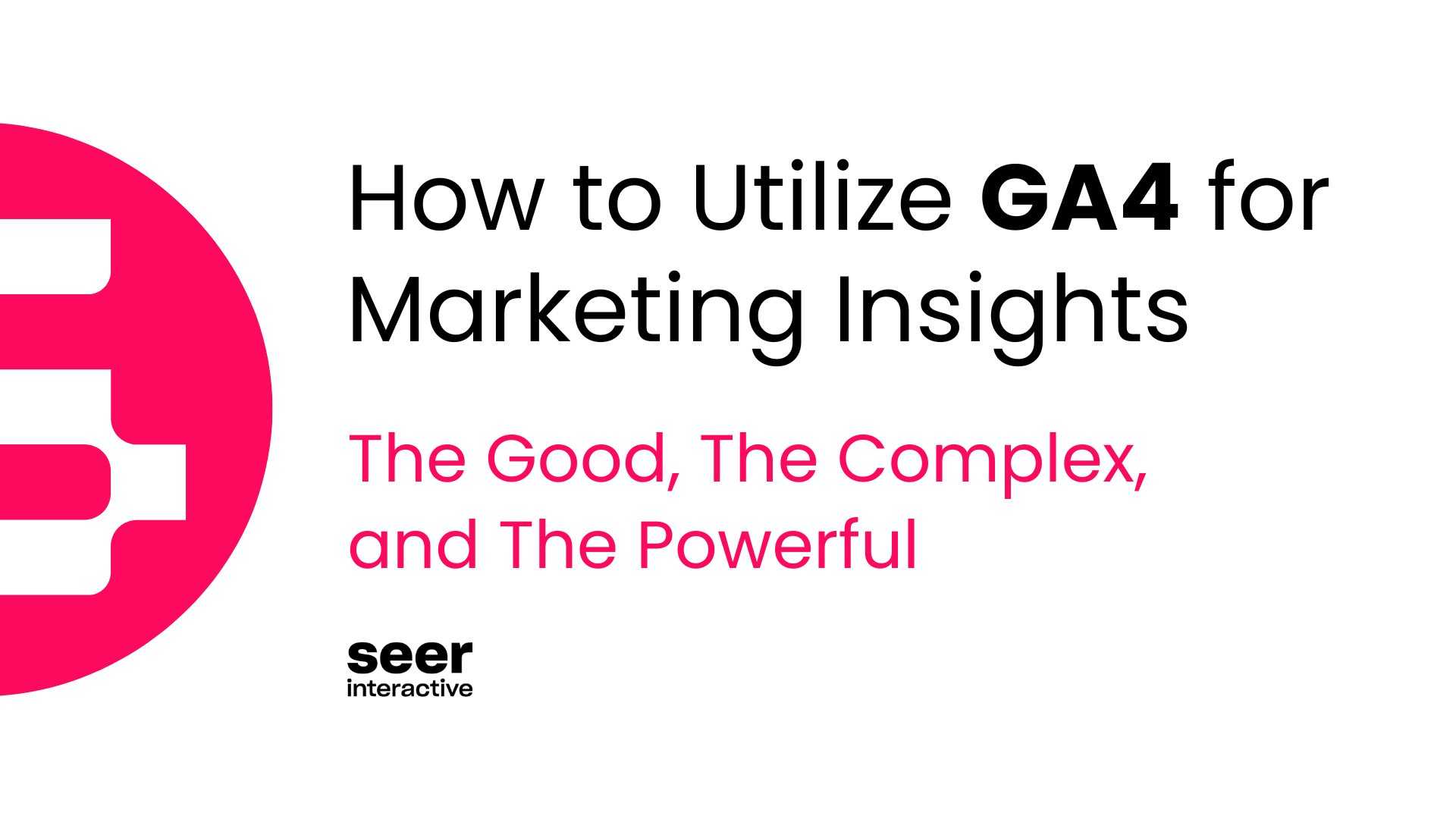Crisis Management in 2021
2020 was unprecedented to say the least. And although the optimist in me hopes for the best in 2021, I have to say I just don’t know.
Marketing can be difficult in such a tremulous time. Human behaviors have drastically changed, let alone consumer or user behaviors online. But one thing we know for sure:
You can have the best-laid plans and still not get the outcome you expected.
Seer already has resources for marketers navigating industry shifts due to the pandemic -- so in this post, I want to focus on marketing during situations such as (but not limited to) racial justice movements and/or political unrest.
Now more than ever, brands have to make really hard choices -- often very publicly -- on top of dealing with economic hardships and the business impacts of current events. Doing nothing says something and doing something, says something.
I’m not here to tell you what is right or wrong for your brand, but to provide a checklist/framework for how to manage the situation at hand so you have contingency plans for keeping agile during times of change.
Crisis Management Checklist
Stay Informed
Whether it’s regularly checking trending topics on Twitter, watching the news, or getting alerts from a popular news app, etc.
💡 Create your own digital newsroom with these tools.
Assess the Situation Head-On
What is happening? You might not know the full story yet but can make initial decisions based on how serious the situation is.
Manage Up to Your Leadership Team
Is executive leadership clear on whether or not marketing should be addressing the issue?
It's always wise to put an action plan in place just in case you don't have clear direction or you can’t reach the leadership team in time before taking action. If you are reading this, and you don’t have a backup plan, I suggest you develop one sooner rather than later.
Assess Your Digital/Online Presence
Consider your brand and the ad copy, could it be deemed offensive or inappropriate based on the new context?
Would it make sense to pause paid social or search ads? Should you skip scheduled organic social posts? If you are unsure, consult with your PR or marketing agency for the best path forward.
For example, some of our clients have chosen to continue posting/advertising during events like these and some have decided to stop. There is always the chance your post or ad will appear near polarizing content -- risking association with it.
At the end of the day, the decision to continue/stop is solely on you to do what's best for your company.
Know Your Target Audience
Do you know how your target audience feels about what's happening?
Brands can choose to remain neutral, as to appear to not pick sides in a sensitive situation. This might be in an effort to protect their business by not alienating one audience or another. However, if 90% of your audience comes from one group and they are in favor of something, you might choose to lean that way. But if your audience is more 50/50, then maybe not.
💡 Knowing your audience just 10% better can massively boost conversions.
Don't Leave Employees in the Dark
Would the company’s actions be supported by employees or would there be any potential for misalignment?
Consider not only how the event/issue affects your bottom line but how it impacts the lives of your employees as well. It's important to be transparent about your action planning so that your team doesn't feel like decisions are happening in a black box.
💡 One of Seer's core values is Transparency -- we've worked closely with our team over the past year to address change head-on.
Make a Decision (Quickly) and Act
Once a decision has been reached, execute the plan. If necessary, you can publicly announce the plan of action and statements regarding the topic.
- If you are going to address the issue, make sure your messaging aligns with your company's values so that everyone can stand behind it.
- If you aren’t going to address the issue, ensure your leadership team understands (and is prepared for) the repercussions of inaction. Sometimes, nothing happens at all. Other times, Twitter decides to #cancel you. You can see how that's a slippery slope...
Continually Reassess the Situation
What is the public/general sentiment of the situation now? Is it over or does the issue still exist?
Hindsight is always 20/20 (ugh!). Continue social listening and monitoring your website's performance to understand the changing attitudes of your audience over time so that you can be in a better position to take strategic action again if needed.
💡 Use this Google Data Studio template to diagnose decision impacts.
Keep Your Plans Agile & Autonomous
As mentioned previously, sometimes the best-laid plans can’t account for curveballs.
While it’s super helpful to have a long-term contingency plan for crisis management, it's even more important to ensure these plans are easy to amend (like an alternative book ending) rather than one that's immovable/set in stone.
Based on the size of your team and the amount of red tape, trusting employees and giving them the autonomy to make decisions when needed can also be a great way to make sure digital marketing can react quickly.
In Conclusion
We get it, you can’t change your marketing strategy every time the wind blows.
But if those winds are hitting 100 mph with no sign of letting up -- consider what you can do to position your company in a way that best reflects your culture and values as you weather the storm.
- Need digital marketing support? Let us know how we can help!
- Want (more predictable) digital marketing updates? Sign up below for the Seer newsletter.


